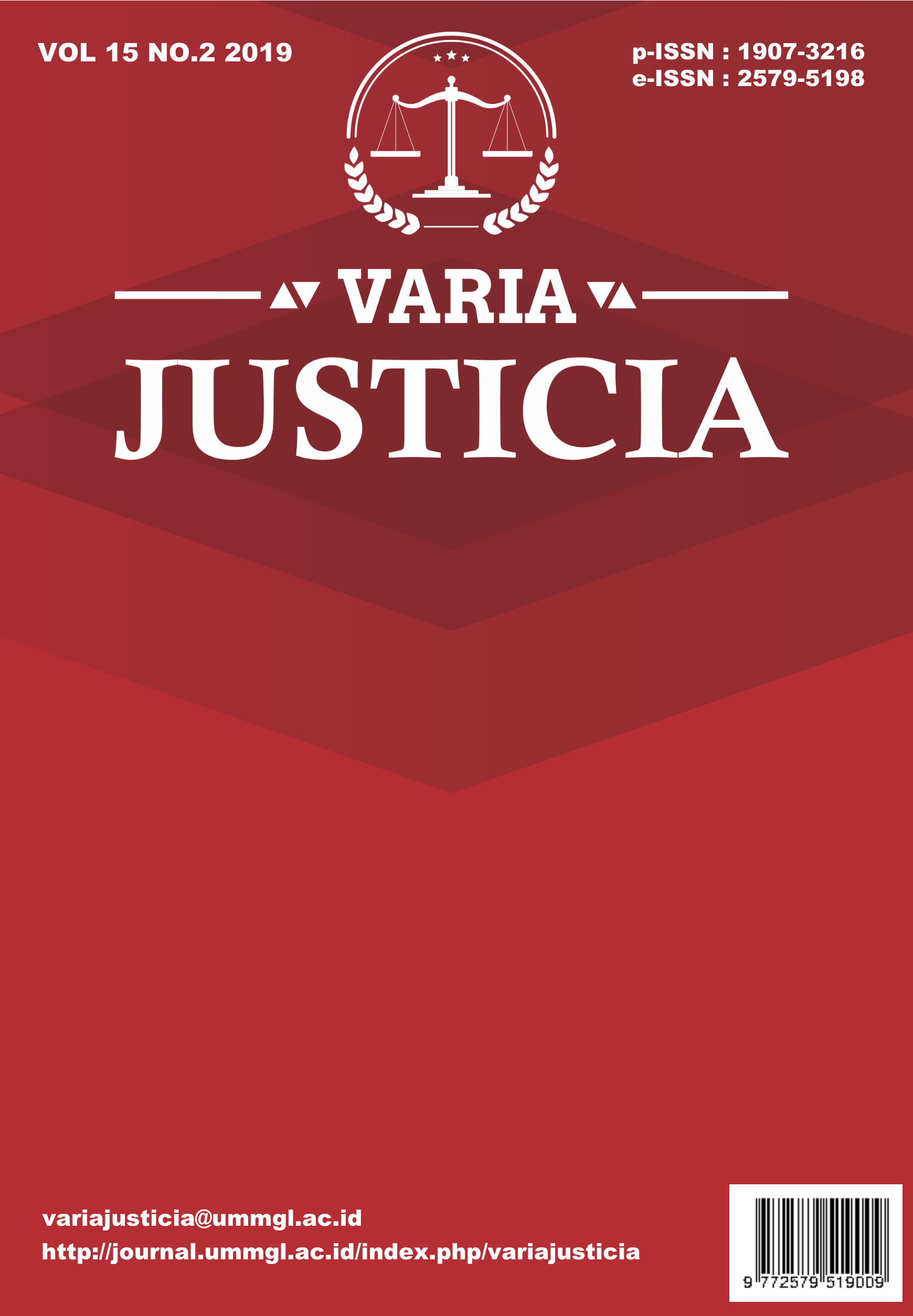Main Article Content
Abstract
This study aims to investigate the involvement and implementation of the Corporate Social Responsibility (CSR) of PT. Tirta Investama Solok Aqua Plant Factory in community empowerment in Solok Regency. The company not only prioritizes the company's financial condition (single bottom line) but also pays attention to the concept of sustainable development and is beneficial for community empowerment, namely the social principles, environmental, and ethical principles (triple bottom line). The approach used in this research is qualitative, with primary data obtained from interviews, observations, and field studies. The data obtained are then analyzed with relevant laws, theories, and expert opinions, while secondary data are obtained from various literature, laws, and regulations. The results showed that in 2014, the implementation of social responsibility at PT. Tirta Investama Danone Aqua is carried out by a non-governmental organization (NGO) of the Indonesian Family Planning Association (PKBI) of West Sumatra Province and the Field Indonesia Foundation. Social responsibility is implemented through social mapping programs, the creation of clean water and sanitation facilities. In the economic field, the activities carried out, namely the school program (sekolah lapangan alpukat), while in the environmental field, PT. Tirta Investama Danone Aqua built the Biodiversity Park (KEHATI) and the Community-Based Total Sanitation Program. Secondly, CSR involvement of PT. Tirta Investama in Community Empowerment is through the Community Based Total Sanitation Program (STBM).
Keywords
Article Details
References
- Alhaddi, H. (2015). Triple Bottom Line and Sustainability: A Literature Review. Business and Management Studies, 1(2). https://doi.org/10.11114/bms.v1i2.752
- Danone. (2004). Mexico embraces. Retrieved April 20, 2019, from http://media.corporate-ir.net/media_files/irol/95/95168/annualreports/04_indexed/Engagements_DoubleProjet.pdf
- Isidiho, A. O. (2016). Evaluating the Top-Bottom and Bottom-Up Community Development Approaches: Mixed Method Approach as Alternative for Rural Un-Educated Communities in Developing Countries. Mediterranean Journal of Social Sciences, 7(4), 266–273. https://doi.org/10.5901/mjss.2016.v7n4p
- Moore, M. H. (2000). Managing for value: Organizational strategy in for-profit, nonprofit, and governmental organizations. Nonprofit and Voluntary Sector Quarterly, 29(SUPPL.), 183–204. https://doi.org/10.1177/089976400773746391
- Niño, A. C. S. (2015). Social Entrepreneurship and Corporate Social Responsibility : Differences and Points in Common. Journal of Business & Economic Policy, 2(2), 85–93.
- Nurbaety, A., Ratnasih, R., & Ramdan, H. (2005). Analisis Implementasi Corporate Social Responsibility PT. Bio Farma di Desa Sukamulya Kabupaten Sukabumi. Jurnal Sosioteknologi, 14(2), 141–153.
- Pranoto, A. R., & Yusuf, D. (2014). Program CSR Berbasis Pemberdayaan Masyarakat Menuju Kemandirian Ekonomi Pasca Tambang di Desa Sarijaya. Jurnal Ilmu Sosial Dan Ilmu Politik, 18(1), 39–50.
- Zulfiqar, S., Sadaf, R., Popp, J., Vveinhardt, J., & Máté, D. (2019). An examination of Corporate Social Responsibility and employee behavior: The case of Pakistan. Sustainability (Switzerland), 11(13), 1–15. https://doi.org/10.3390/su11133515
